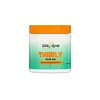What's inside
What's inside
 Key Ingredients
Key Ingredients

 Benefits
Benefits

 Concerns
Concerns

 Ingredients Side-by-side
Ingredients Side-by-side

Water
Skin ConditioningPropanediol
SolventCeteareth-25
CleansingPolysorbate 20
EmulsifyingMaltodextrin/Vp Copolymer
Hydroxyethylcellulose
Emulsion StabilisingSorbitol
HumectantEthylhexyl Olivate
Skin ConditioningPersea Gratissima Oil
Skin ConditioningPhenoxyethanol
PreservativeEthylhexylglycerin
Skin ConditioningParfum
MaskingPolyquaternium-11
Hydrolyzed Linseed Seed
HumectantSodium Phytate
Carbomer
Emulsion StabilisingGluconolactone
Skin ConditioningSodium Benzoate
MaskingWater
Skin ConditioningAloe Barbadensis Sprout
HumectantHydroxyethylcellulose
Emulsion StabilisingMaltodextrin/Vp Copolymer
Potassium Hydroxide
BufferingGluconolactone
Skin ConditioningSodium Benzoate
MaskingCalcium Gluconate
HumectantAcrylates/C10-30 Alkyl Acrylate Crosspolymer
Emulsion StabilisingCitrus Aurantium Dulcis Peel Oil
MaskingCaprylic/Capric Triglyceride
MaskingPotassium Sorbate
PreservativeSodium Phytate
Glycerin
HumectantChamomilla Recutita Flower Extract
MaskingEucalyptus Globulus Leaf Extract
PerfumingGinkgo Biloba Leaf Extract
Skin ConditioningAspalathus Linearis Leaf Extract
Skin ConditioningHoney Extract
HumectantLimonene
PerfumingWater, Aloe Barbadensis Sprout, Hydroxyethylcellulose, Maltodextrin/Vp Copolymer, Potassium Hydroxide, Gluconolactone, Sodium Benzoate, Calcium Gluconate, Acrylates/C10-30 Alkyl Acrylate Crosspolymer, Citrus Aurantium Dulcis Peel Oil, Caprylic/Capric Triglyceride, Potassium Sorbate, Sodium Phytate, Glycerin, Chamomilla Recutita Flower Extract, Eucalyptus Globulus Leaf Extract, Ginkgo Biloba Leaf Extract, Aspalathus Linearis Leaf Extract, Honey Extract, Limonene
Ingredients Explained
These ingredients are found in both products.
Ingredients higher up in an ingredient list are typically present in a larger amount.
Gluconolactone is a PHA. PHAs are a great gentle alternative to traditional AHAs.
When applied, Gluconolactone has the same affect on skin as AHAs such as lactic acid. It helps dissolve the dead skin cells in the top layer of your skin. This improves texture and brightens the skin.
PHAs are more gentle than AHAs due to their larger structure. They do not penetrate as deeply as AHAs and take a longer time to dissolve dead cells. Studies show PHAs do not cause as much irritation.
Gluconolactone has some interesting properties:
In a 2004 study, Gluconolactone was found to prevent UV damage in mouse skin cells and has not been found to increase sun sensitivity. However, we still recommend wearing SPF daily.
This ingredient is is an created by reacting gluconic acid with an alcohol.
Learn more about GluconolactoneHydroxyethylcellulose is used to improve the texture of products. It is created from a chemical reaction involving ethylene oxide and alkali-cellulose. Cellulose is a sugar found in plant cell walls and help give plants structure.
This ingredient helps stabilize products by preventing ingredients from separating. It can also help thicken the texture of a product.
This ingredient can also be found in pill medicines to help our bodies digest other ingredients.
Learn more about HydroxyethylcelluloseWe don't have a description for Maltodextrin/Vp Copolymer yet.
Sodium Benzoate is a preservative. It's used in both cosmetic and food products to inhibit the growth of mold and bacteria. It is typically produced synthetically.
Both the US FDA and EU Health Committee have approved the use of sodium benzoate. In the US, levels of 0.1% (of the total product) are allowed.
Sodium benzoate works as a preservative by inhibiting the growth of bacteria inside of cells. It prevents the cell from fermenting a type of sugar using an enzyme called phosphofructokinase.
It is the salt of benzoic acid. Foods containing sodium benzoate include soda, salad dressings, condiments, fruit juices, wines, and snack foods.
Studies for using ascorbic acid and sodium benzoate in cosmetics are lacking, especially in skincare routines with multiple steps.
We always recommend speaking with a professional, such as a dermatologist, if you have any concerns.
Learn more about Sodium BenzoateSodium Phytate is the synthetic salt form of phytic acid. Phytic acid is an antioxidant and can be found in plant seeds.
Sodium Phytate is a chelating agent. Chelating agents help prevent metals from binding to water. This helps stabilize the ingredients and the product.
Water. It's the most common cosmetic ingredient of all. You'll usually see it at the top of ingredient lists, meaning that it makes up the largest part of the product.
So why is it so popular? Water most often acts as a solvent - this means that it helps dissolve other ingredients into the formulation.
You'll also recognize water as that liquid we all need to stay alive. If you see this, drink a glass of water. Stay hydrated!
Learn more about Water